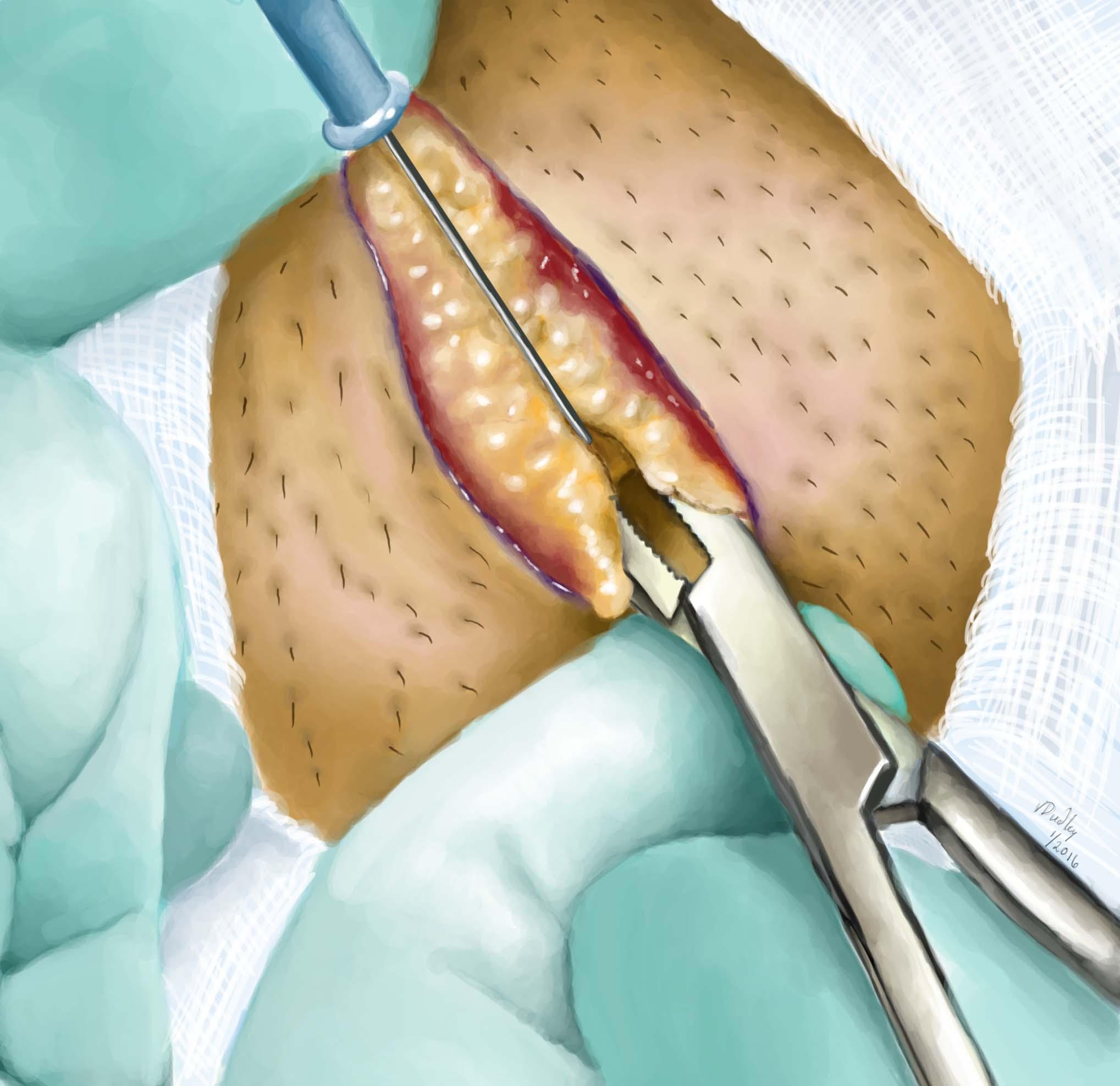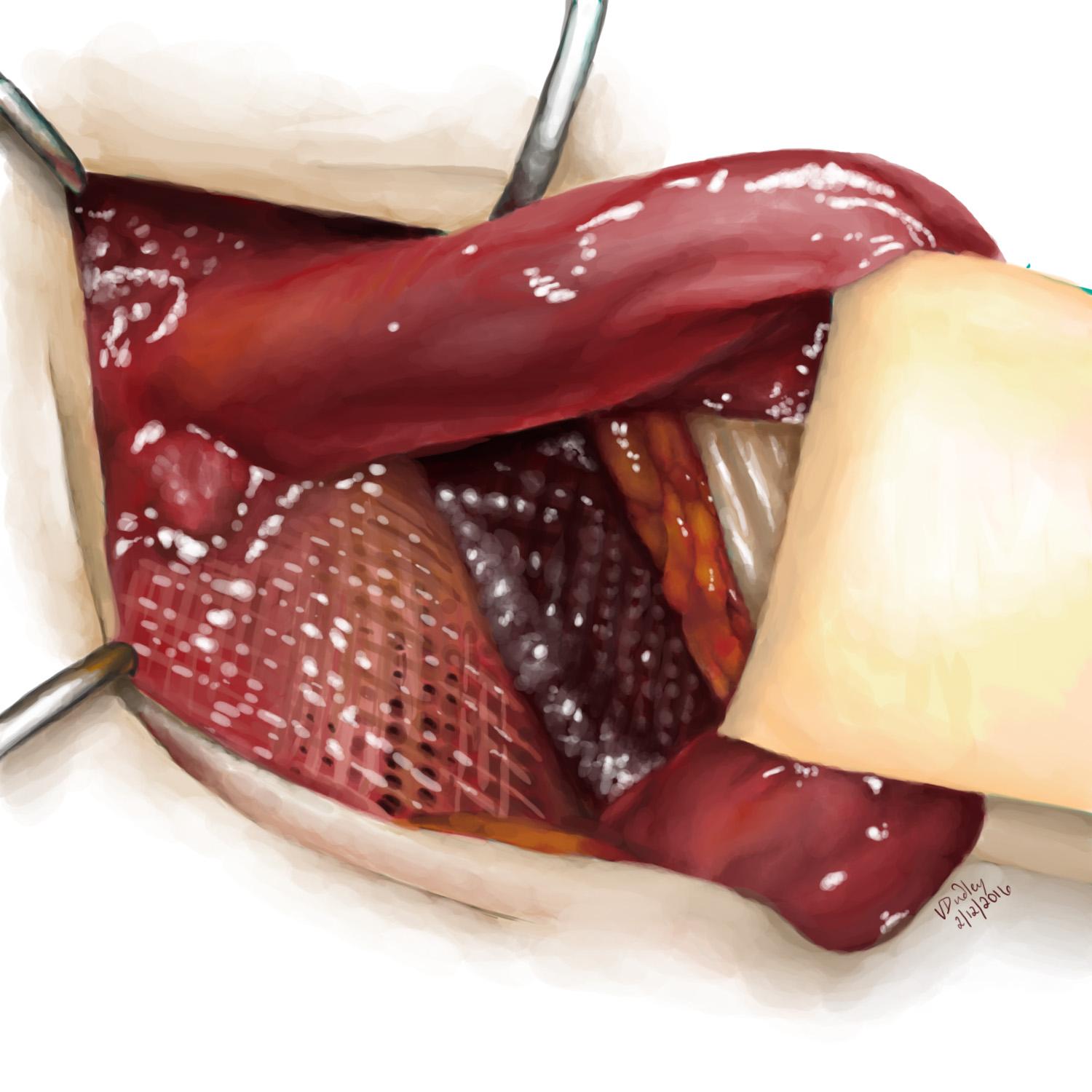A hernia is an abnormal opening (defect) in the abdominal wall that allows the intestines (bowels) to protrude, forming a lump in the groin that may descend into the scrotum. Hernia repair is necessary to prevent a surgical emergency called " strangulated hernia" which occurs when the bowel goes into the hernia sac and is unable to retract into the abdomen. If the blood supply to the bowel is cut off from a narrow opening into the hernia, the bowels can die. Hernia repair will prevent this life threatening complication. The hernia is repaired through a 3-inch incision in the groin. The defect in the abdomen is repaired with either sutures and/or a patch made out of mesh.

Hernia incision

Inguinal hernia repair
The methods of repair that we employ are designed to avoid injury to the male reproductive structures and therefore preserve future fertility.
Hernia repair is the most common general surgical procedure. It is associated with disturbingly frequent complications such as chronic post-herniorrhaphy pain, sensory loss and vasal obstruction. Drawing on our large experience utilizing the operating microscope for varicocelectomy, vasectomy reversal as well as repair of iatrogenic vasal obstructions from hernia repair, we began employing it for inguinal hernia repair with virtual elimination of complications.
With the use of an operating microscope, complications of inguinal hernia repair such as vasal obstruction, testicular atrophy, recurrence, infection, and hematoma are minimized. Most notably, no incidences of chronic post-operative pain or loss of sensation were seen, representing significantly better outcomes than reported in the literature.
![]() Click here for post-operative instructions following hernia repair.
Click here for post-operative instructions following hernia repair.

